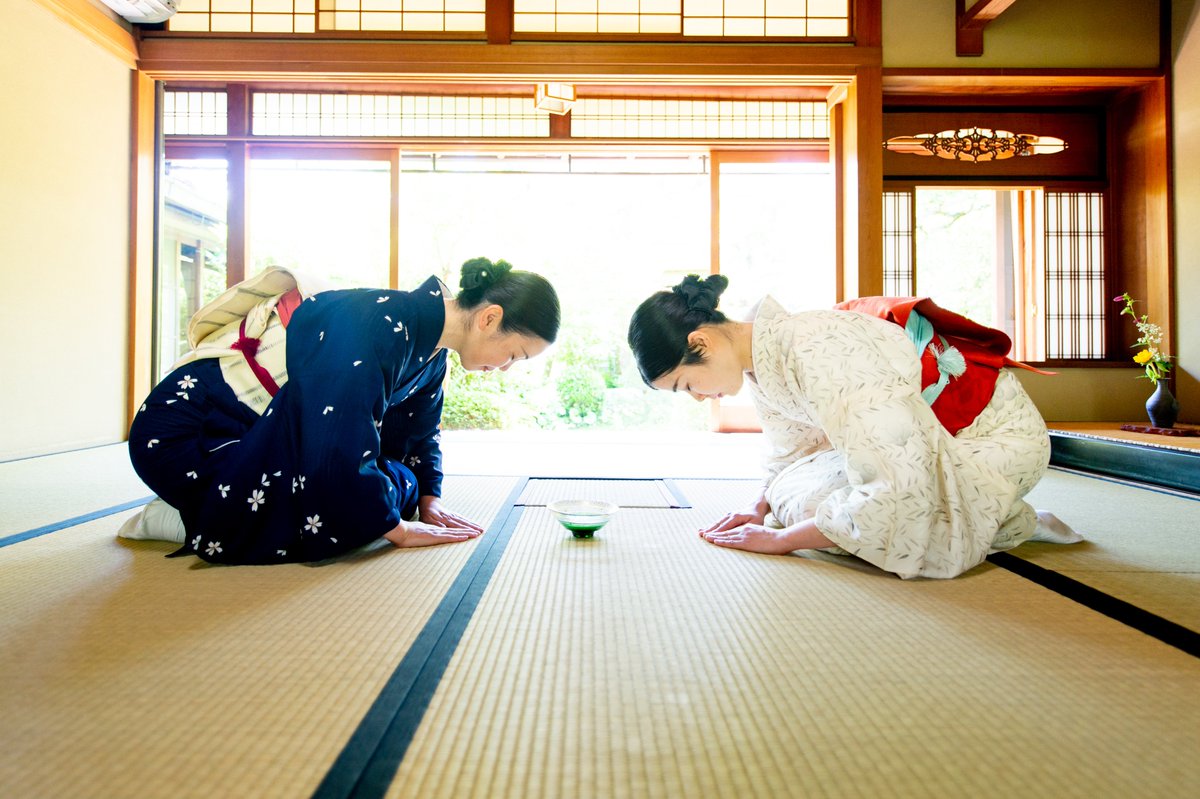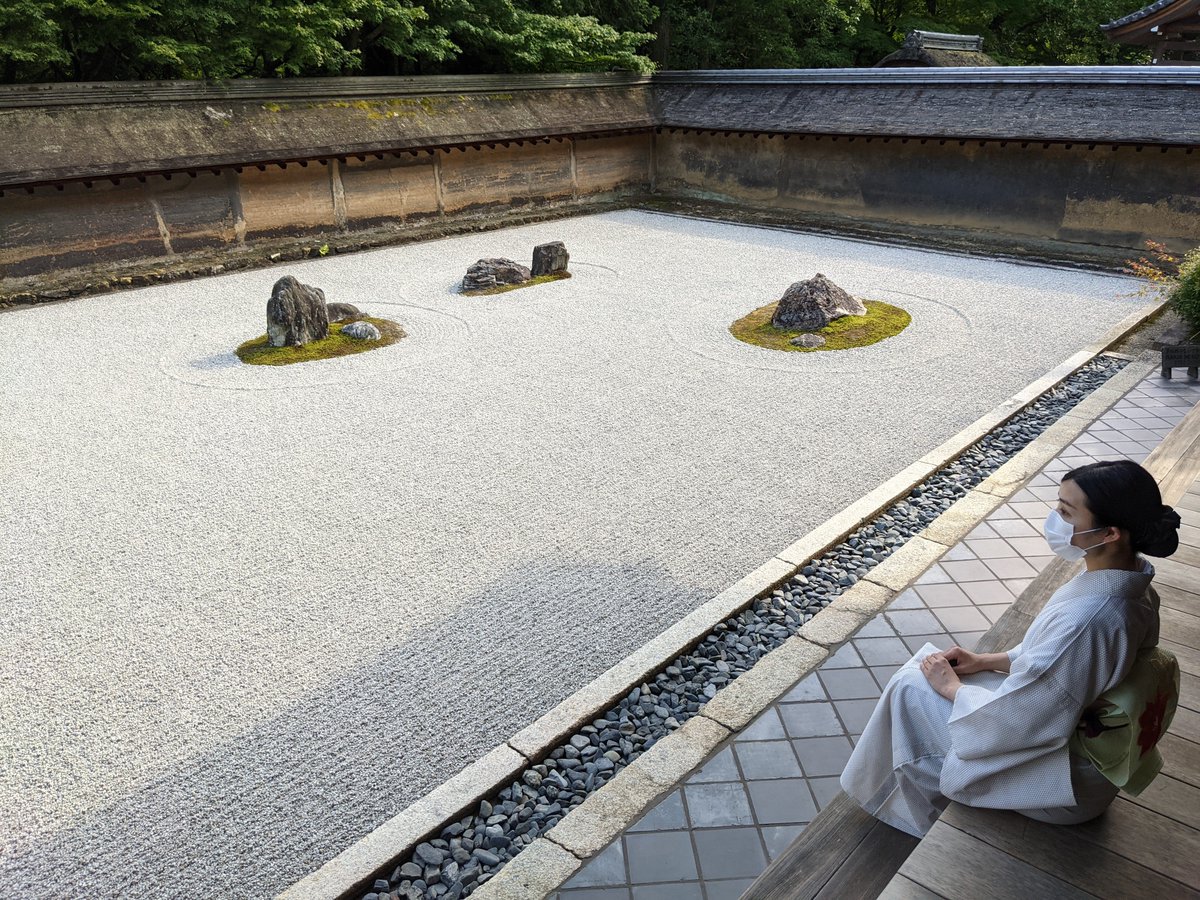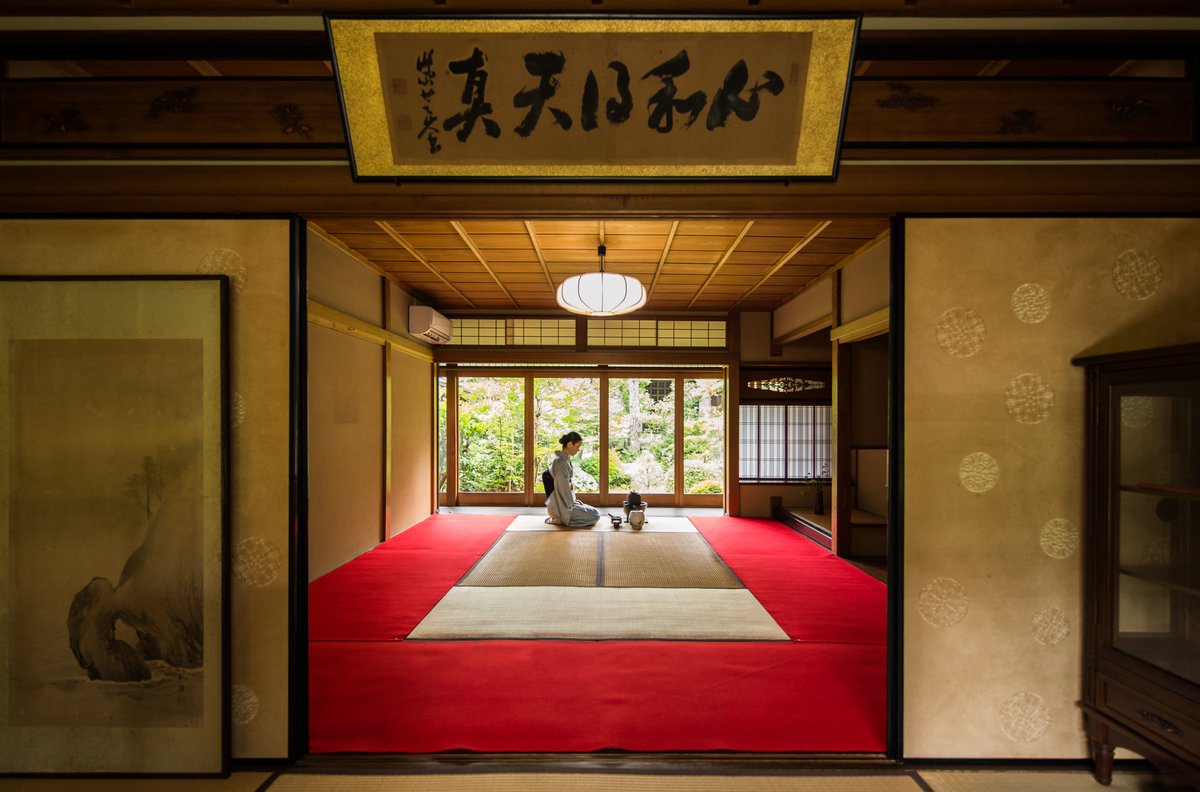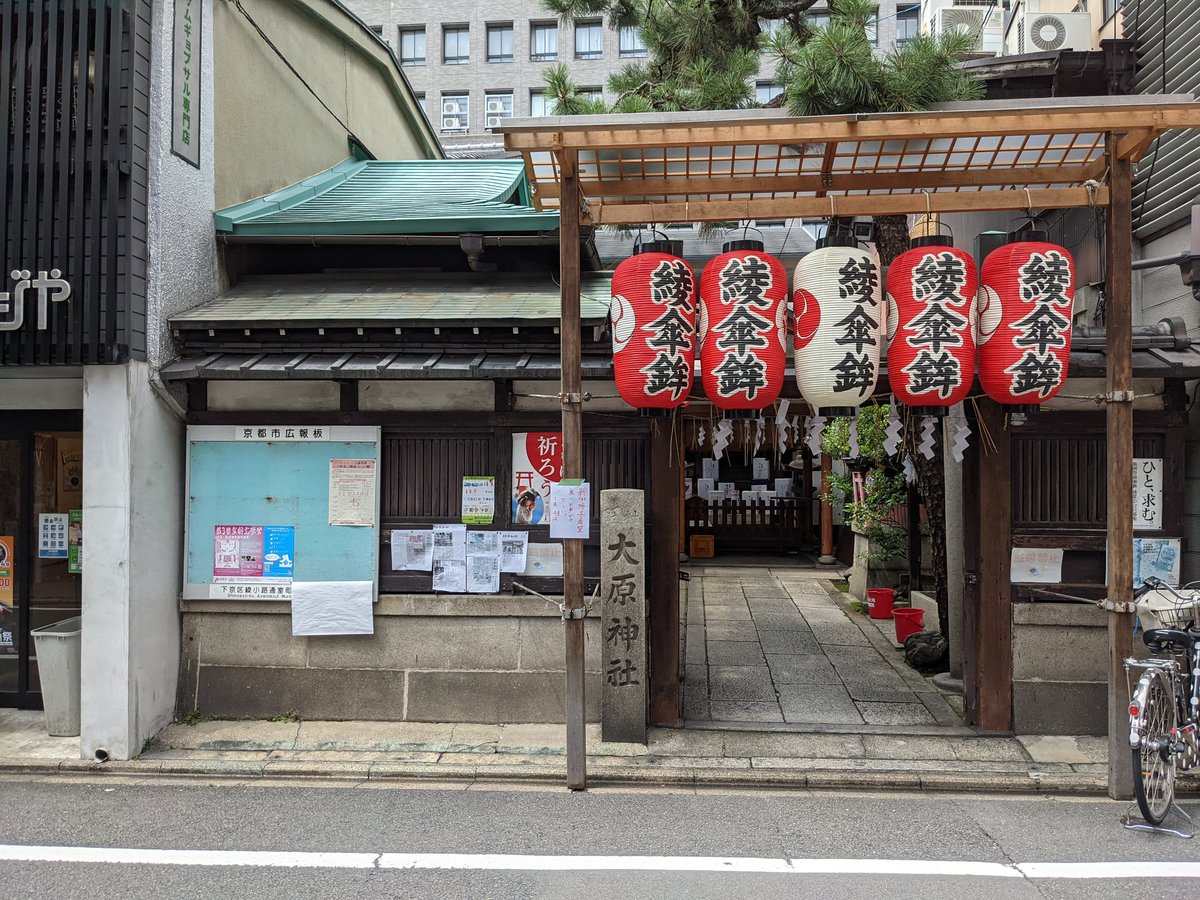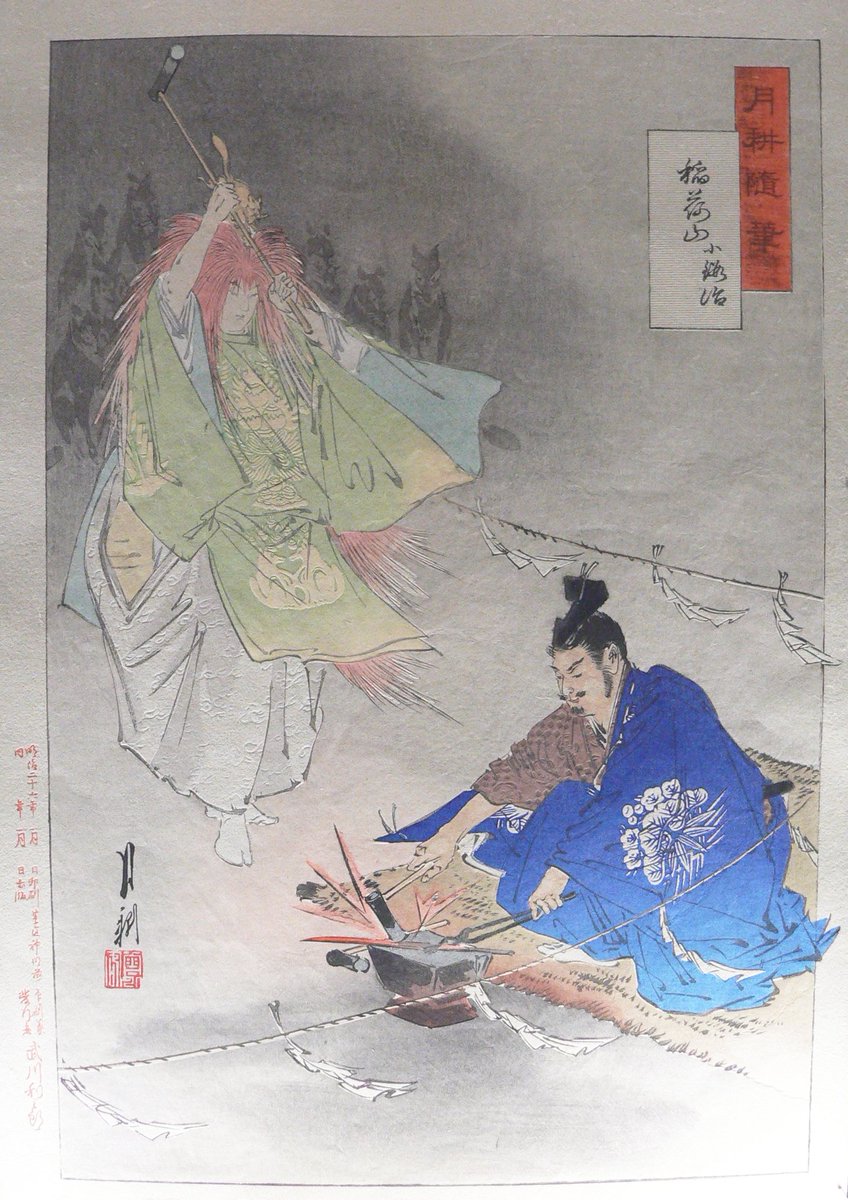
🍡MOREISH MITARASHI😋
Today is the beginning of a three-day period celebrating mitarashi dango (みたらし団子)!🎉
Actually, this happens every month from the 3rd-5th because...
3= 'MI' (み)
4= 'taraSHI' (たらし)
5= 'danGO' (だんご)
Tenuous wordplay? Yes.
Fun? Also, yes.
#京都



Today is the beginning of a three-day period celebrating mitarashi dango (みたらし団子)!🎉
Actually, this happens every month from the 3rd-5th because...
3= 'MI' (み)
4= 'taraSHI' (たらし)
5= 'danGO' (だんご)
Tenuous wordplay? Yes.
Fun? Also, yes.
#京都

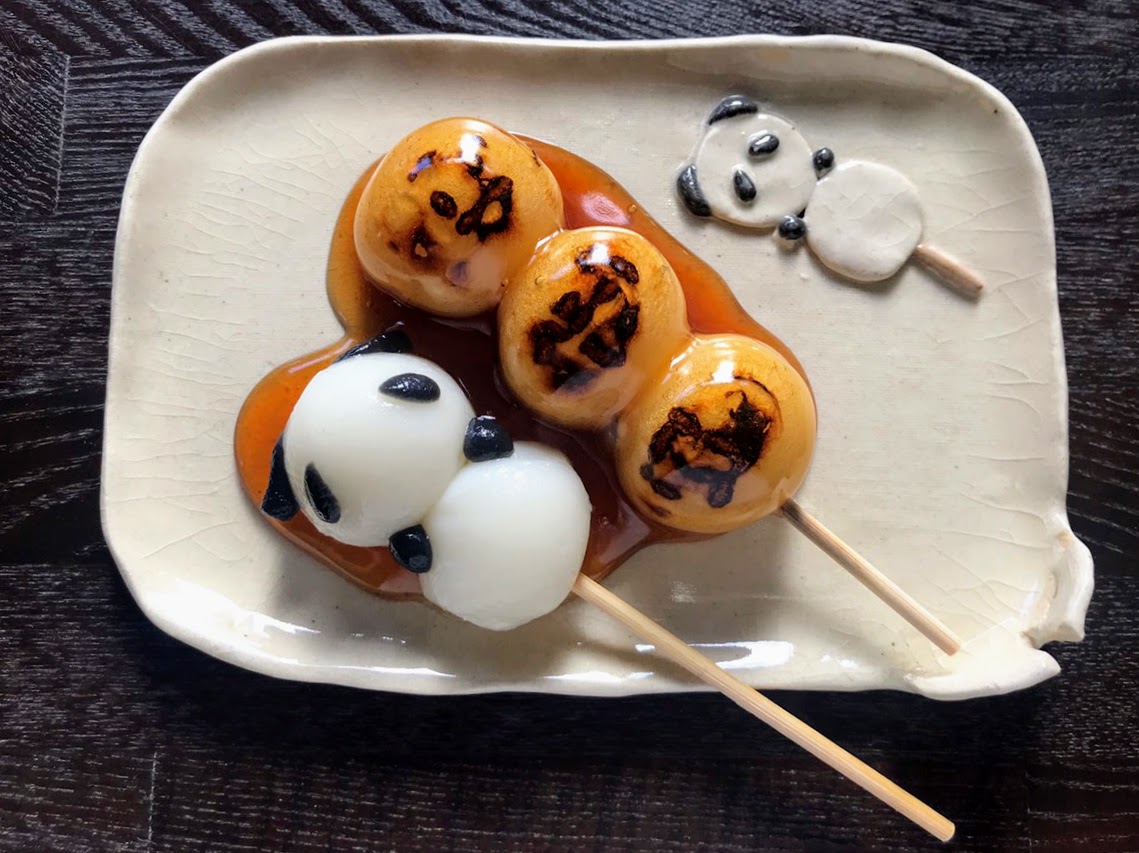
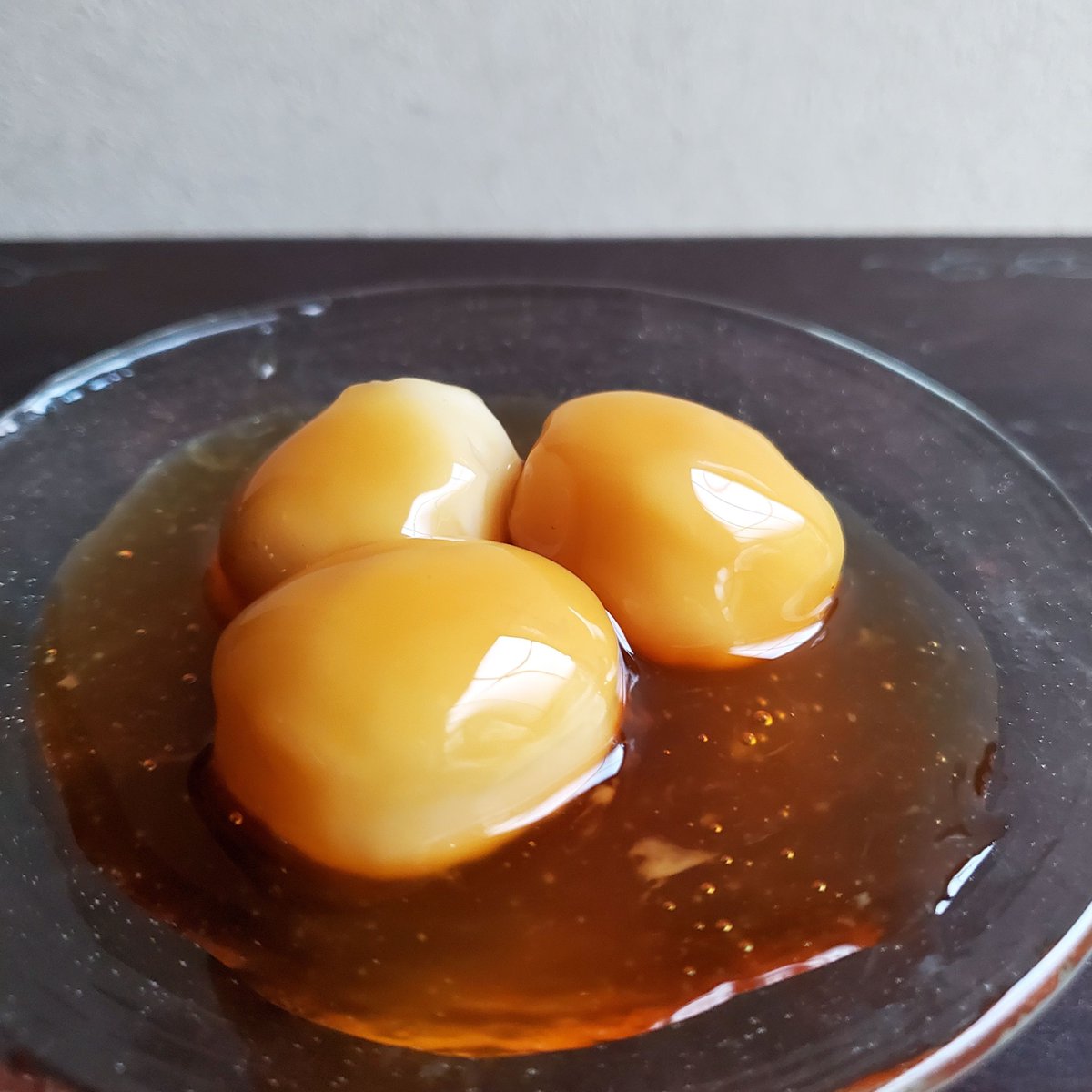
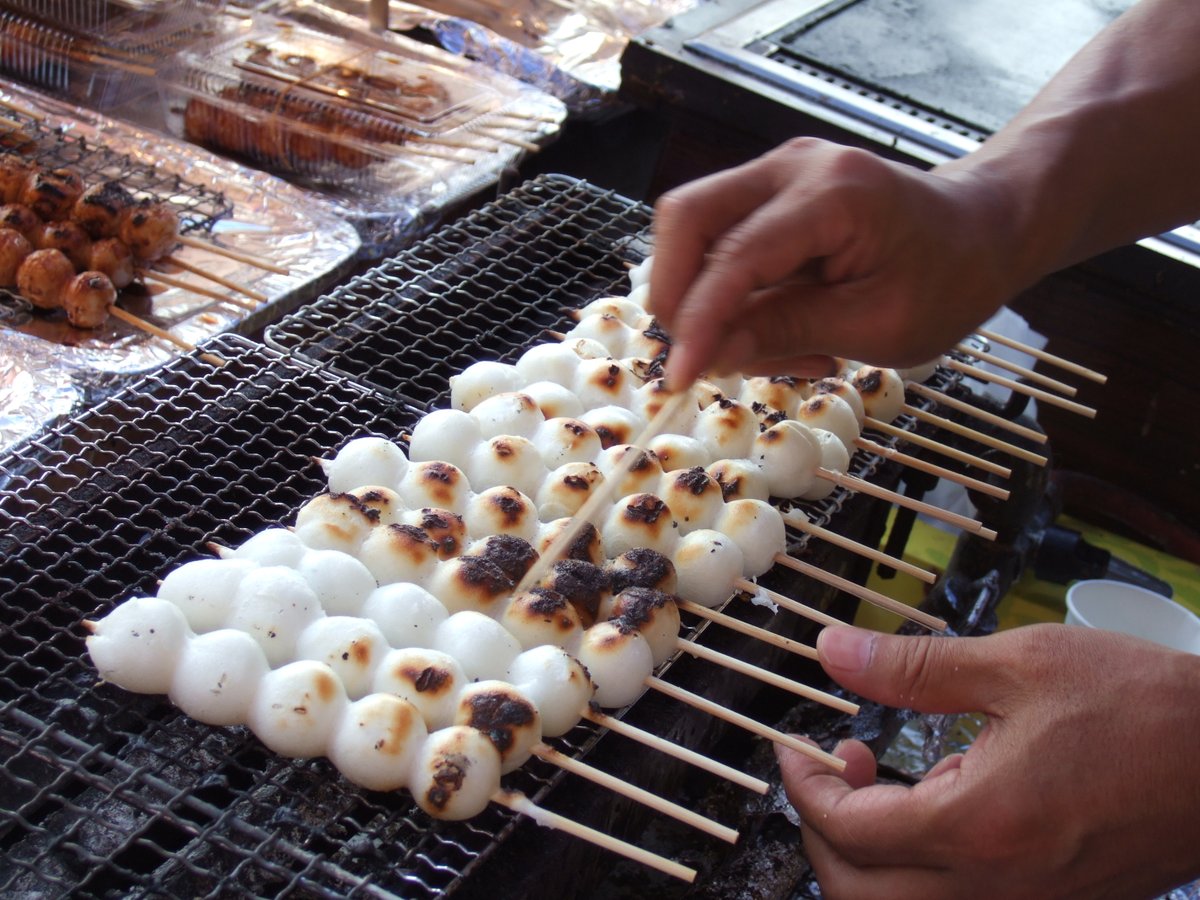
In its traditional form, mitarashi dango is made up of 5 small rice dumplings...skewered, grilled, and served with a sweet soy sauce glaze.
Legend has it that the inspiration for the snack came from a miraculous incident involving Emperor Go-Daigo (後醍醐天皇 1288-1339).
#Japan



Legend has it that the inspiration for the snack came from a miraculous incident involving Emperor Go-Daigo (後醍醐天皇 1288-1339).
#Japan




During one of Go-Daigo's outings to Shimogamo-jinja, 5 bubbles appeared in the water as he purified his hands.
Interpreted as the human body (五体 - head, arms and legs), it was taken as a fortuitous sign.
The emperor offered 5 rice dumplings (4 big & 1 small) to the shrine gods.
Interpreted as the human body (五体 - head, arms and legs), it was taken as a fortuitous sign.
The emperor offered 5 rice dumplings (4 big & 1 small) to the shrine gods.
What we know as mitarashi dango originated at the Kamo Mitarashi Chaya 'Tea House' (加茂みたらし茶屋), situated to the west of the shrine grounds.
It became tradition at Shimogamo-jinja to symbolically offer dumplings to the gods before eating them for luck.
#Kyoto #みたらし茶屋



It became tradition at Shimogamo-jinja to symbolically offer dumplings to the gods before eating them for luck.
#Kyoto #みたらし茶屋




The Kamo Mitarashi Chaya (加茂みたらし茶屋) was established in 1922, and it's astonishing to think that mitarashi dango are only 100 years old this year!
The shop highlights the inspiration for the dango by serving one slightly apart (just how Emperor Go-Daigo saw the bubbles).



The shop highlights the inspiration for the dango by serving one slightly apart (just how Emperor Go-Daigo saw the bubbles).




Nao-san visited Ishiyama-dera (石山寺) last autumn with one snack in mind...fried mitarashi dango (揚げみたらし 'age mitarashi').
A small store just outside the main gate specializes in this delicious (but a little less-than-healthy) sweet🍡
#揚げみたらし #mitarashidango #Japan



A small store just outside the main gate specializes in this delicious (but a little less-than-healthy) sweet🍡
#揚げみたらし #mitarashidango #Japan




It's fairly unusual to find a fried version of this particular snack, and it was a big hit with Nao-san😋
#dango #mitarashidango #団子 #みたらしだんご #揚げみたらし #滋賀県 #石山寺
#dango #mitarashidango #団子 #みたらしだんご #揚げみたらし #滋賀県 #石山寺
Fried dango is certainly not something I knew I needed in my life, but here we are.
Not all sweets need to look like works of art😂🍡
#dango #mitarashidango #団子 #みたらしだんご #揚げみたらし #滋賀県 #石山寺
Not all sweets need to look like works of art😂🍡
#dango #mitarashidango #団子 #みたらしだんご #揚げみたらし #滋賀県 #石山寺
To combat the heat Nao-san enjoyed chilled mitarashi dango with a rather unusual looking bowl🧐
A 'katakuchi chawan' (片口茶碗) is a spouted bowl that allows you to mix matcha (or regulate the temperature of hot water) and then share the contents...perfect if you're on a picnic!



A 'katakuchi chawan' (片口茶碗) is a spouted bowl that allows you to mix matcha (or regulate the temperature of hot water) and then share the contents...perfect if you're on a picnic!




I couldn't go on without mentioning our close friend Misako-san at Panda-no-Sanpo (ぱんだの散歩). She has taken her love for pandas and created one of the city's cutest dango💞
The store also specializes in the more traditional mitarashi dango🙌
➡️pandanosanpo.com
#Kyoto



The store also specializes in the more traditional mitarashi dango🙌
➡️pandanosanpo.com
#Kyoto




A scorching hot day calls for a refreshing tea soda at Panda-no-Sanpo😊
@panda_nosanpo
#pandango #teasoda #Japan #Kyoto #pandanosanpo #ぱんだの散歩 #京都
@panda_nosanpo
#pandango #teasoda #Japan #Kyoto #pandanosanpo #ぱんだの散歩 #京都
• • •
Missing some Tweet in this thread? You can try to
force a refresh

